Filter by
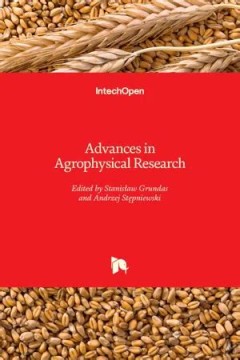
Advances in Agrophysical Research
The idea of this book was born due to the rapid increase of the interest in excellence of agricultural production in the aspect of both - the quality of raw material for food production as well as in the aspect of environment protection. Agrophysics is a field of science that focuses on the quality of agriculture as a whole i.e. the interaction between human and environment, especially the inte…
- Edition
- -
- ISBN/ISSN
- 9789535153849
- Collation
- 410 hlm; ill., lamp.,
- Series Title
- -
- Call Number
- -
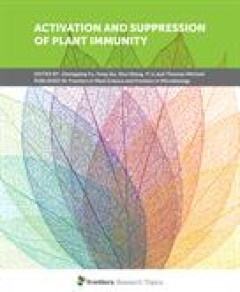
Activation and Suppression of Plant Immunity
This eBook is a collection of articles from a Frontiers Research Topic. Frontiers Research Topics are very popular trademarks of the Frontiers Journals Series: they are collections of at least ten articles, all centered on a particular subject. With their unique mix of varied contributions from Original Research to Review Articles, Frontiers Research Topics unify the most influential researcher…
- Edition
- -
- ISBN/ISSN
- 9782889632930
- Collation
- oer.unej.ac.id
- Series Title
- -
- Call Number
- -

Advanced Research on Sprouts and Microgreens as a Source of Bioactive Compounds
Today, researchers are focused on studying and identifying new products that can be beneficial for both food and pharmaceutical purposes. In this context, sprouts and microgreens are widely recognized as functional foods due to their high nutritional value, and in particular, their high bioactive compound content, which is mainly composed of phytochemicals. However, despite extensive research o…
- Edition
- -
- ISBN/ISSN
- 9783036571768
- Collation
- 224 hlm,: ill, lamp; 21 cm
- Series Title
- -
- Call Number
- -

A dynamic interplay between membranes and the cytoskeleton critical for cell …
Various cellular processes underlying plant development and response to environmental cues rely on a dynamic interplay between membranes and the cytoskeleton, e.g. vesicle and organelle trafficking, endocytosis, exocytosis, and signal transduction. In recent years, significant progress in the understanding of such interplay has been achieved and several critical links between membranes and the …
- Edition
- -
- ISBN/ISSN
- 9782889193233
- Collation
- 80 hlm
- Series Title
- -
- Call Number
- -

"One rotten apple spoils the whole barrel": The plant hormone ethylene, the s…
The gaseous molecule ethylene (C2H4), which is small in size and simple in structure, is a plant hormone most often associated with fruit ripening yet has a diversity of effects throughout the plant life cycle. While its agricultural effects were known even in ancient Egypt, the complexity of its mode of action and the broad spectrum of its effects and potential uses in plant physiology remain …
- Edition
- -
- ISBN/ISSN
- 9782889196234
- Collation
- -
- Series Title
- -
- Call Number
- -
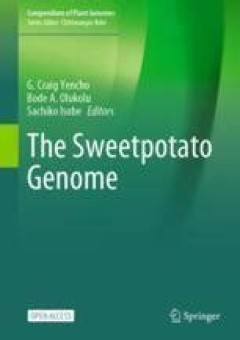
The Sweetpotato Genome
This open access book is a compilation of advances in sweetpotato genomics, which have been used to improve our understanding of the evolution of sweetpotato, increase our knowledge of crop growth and development, and provided critical information required for genomic-assisted breeding in sweetpotato. Sweetpotato is a critical food staple for millions of people in the developing world that has…
- Edition
- -
- ISBN/ISSN
- 9783031650031
- Collation
- XVII, 166 hlm ill; lamp
- Series Title
- -
- Call Number
- -
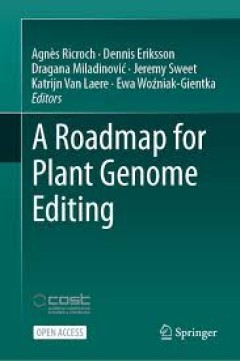
A Roadmap for Plant Genome Editing
This open access book is an update of genome editing techniques applied to a range of plants. We discuss the latest techniques and applications to cereals, roots and tubers, oilseed crops, fruit and forest trees, vegetables, legumes and algae including resistance to biotic and abiotic stresses, improved quality, drug production, yield and adaptation to climate change. The regulations in differ…
- Edition
- -
- ISBN/ISSN
- 978-3-031-46150-7
- Collation
- X, 561
- Series Title
- -
- Call Number
- -

Guideline for Salinity Assessment, Mitigation and Adaptation Using Nuclear an…
This open access book is an outcome of the collaboration between the Soil and Water Management & Crop Nutrition Section, Joint FAO/IAEA Division of Nuclear Techniques in Food and Agriculture, Department of Nuclear Sciences and Applications, International Atomic Energy Agency (IAEA), Vienna, Austria, and Dr. Shabbir A Shahid, Senior Salinity Management Expert, Freelancer based in United Arab Emi…
- Edition
- 1
- ISBN/ISSN
- 9783319961903
- Collation
- XXVI, 164 hlm,: ill, lamp;
- Series Title
- -
- Call Number
- -

Wheat Evolution and Domestication
This open access book covers a century of research on wheat genetics and evolution, starting with the discovery in 1918 of the accurate number of chromosomes in wheat. We re-evaluate classical studies that are pillars of the current knowledge considering recent genomic data in the wheat group comprising 31 species from the genera Amblyopyrum, Aegilops, Triticum, and other more distant relatives…
- Edition
- -
- ISBN/ISSN
- 978-3-031-30174-2
- Collation
- XXIII, 673
- Series Title
- -
- Call Number
- -
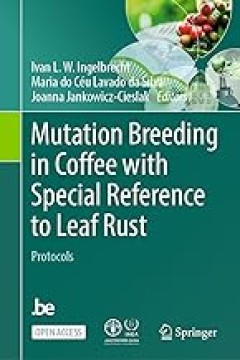
Mutation Breeding in Coffee with Special Reference to Leaf Rust
This open-access book provides a comprehensive overview of current methodologies for improving resistance to leaf rust in coffee, one of the world's most important cash crops and beverages. Coffea arabica L. (Arabica) accounts for about 60% of the world's coffee production. Coffee leaf rust (CLR), caused by the fungus Hemileia vastatrix is the major disease affecting Arabica coffee resulting in…
- Edition
- -
- ISBN/ISSN
- 978-3-662-67272-3
- Collation
- XX, 314
- Series Title
- -
- Call Number
- -
 Computer Science, Information & General Works
Computer Science, Information & General Works  Philosophy & Psychology
Philosophy & Psychology  Religion
Religion  Social Sciences
Social Sciences  Language
Language  Pure Science
Pure Science  Applied Sciences
Applied Sciences  Art & Recreation
Art & Recreation  Literature
Literature  History & Geography
History & Geography